Humla Karnali
Expedition Kayaking in Nepal
.
Paddling team: George Fell, Jonny Hawkins, Stu Martindale
Pictures: Thanks to Stu Martindale & Jonny Hawkins for images
Sitting at home in 2021, looking back on a paddling adventure from almost five years ago, it feels like a different life in a different world. Thumbing through the crinkly Nepali exercise book I took with me on the river and trying to decipher my scruffy pencil notes has made me smile. The notes are quite terse for the first week on the Humla, probably because I was pretty psyched by the paddling, and more intent on eating and sleeping than writing. It’s definitely one of my best, most intense paddling adventures. Hopefully we’ll all be able to have more adventures in the not too distant future.
I love paddling in Nepal; the people, the cultures, the landscape, the rivers. I’ve had so many great experiences over the years. There’s so much variety in one country, from city life to subsistence farming, from the highest Himalayan peaks in the north to the heat and dust of the Gangetic plain in the south.
.
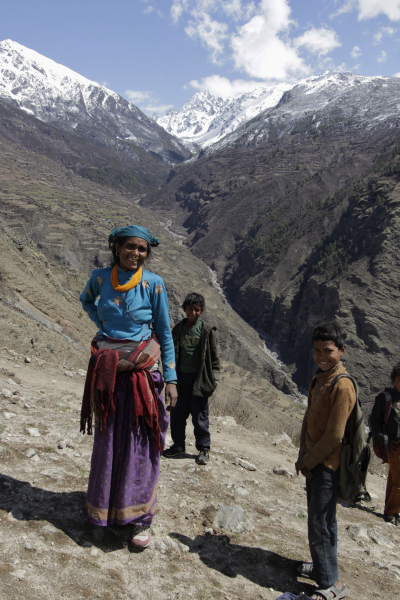
.
There are loads of ways to go paddling out there; independently or as part of an organised group; flying out with your own gear, or seeing what you can hire when you get there. It’s also the kind of place where you can turn up on your own as a boater, get yourself over to Pokhara and blag your way into paddling with some new buddies. However you do it there are loads of great adventures to be had, whether it’s your first time in kayak, or you’re seeking out the gnarliest lines on the biggest steepest rivers. There are fantastic multi-day trips on the main drainages – the Seti, Sun Kosi, Trisuli, Karnali – which don’t (at least at normal levels) have anything too desparate on them. Lots of long flatter stretches too, but they tend to whoosh past, as you’re watching the landscape go by. On one memorable occasion, prior to the end of the civil war in 2006, we floated serenely on, passing not just the scenery, but also the Maoist army. We kept assiduously to the opposite side of the river, smiling sheepishly and trying to look as inconspicuous as you can whilst bobbing around in 9 feet of brightly coloured plastic.
If you are inspired to go and paddle in Nepal, I recommend you get hold of a copy of Pete Knowles’ “White Water Nepal” guidebook. Not just for the river descriptions – which to be honest are always going to be more of a flavour than a blow by blow account in a country where the rivers go into spate for 3 months of monsoon, and even house sized boulders get moved around – but for loads of sound advice about the practicalities of paddling in Nepal.
Ever since I first read about the first kayak expeditions to the Humla Karnali in the early ‘90s, I’ve wanted to paddle it. When expedition paddlers like Francesco Salvato and Mick Hopkinson rave about a run you know it’s going to be something special.
The river’s source is found about 80km northwest of the Nepali border in Tibet, near the sacred Mount Kailash, from which the waters of the Indus, Ganga and Brahmaputra also flow. It flows southwards through Nepal, where it’s the main drainage for much of the western part of the country, and onwards into India where it eventually joins the Ganga, over 1000km later in India.
Stu, Jonny and I planned to paddle the river, from Simikot through almost 400km of grade 3-5 white water, back down to the Mahendra highway (Nepal’s main road) at Chisapani. Although I know them both, I don’t think they’d met, and we’d certainly never paddled together as a team before we got on the Humla. Jonny is skilful, fit and charging hard, whilst Stu brings tonnes of big volume experience and several African first descents to the table. I’d spent more time in Nepal, and was anxiously hoping I’d be able to keep up!
.
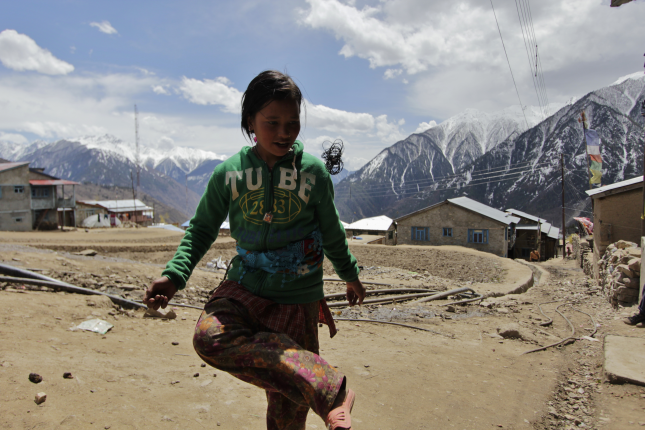
Simikot, the start of our trip
.
In Nepal, half the adventure is getting to the river, and this trip proved no exception. It took a combination of bus, rickshaw, donkey cart and plane to reach Simikot – the main town of the Humla region. We obtained a permit to enter Humla region, but the officials also expected us to have a trekking permit. After a spot of wrangling, some time spent reassuring the local police that we had every intention of avoiding trekking with our kayaks and a few days spent anxiously waiting for our boats to arrive, we finally hired three porters for the walk down to the river.
.
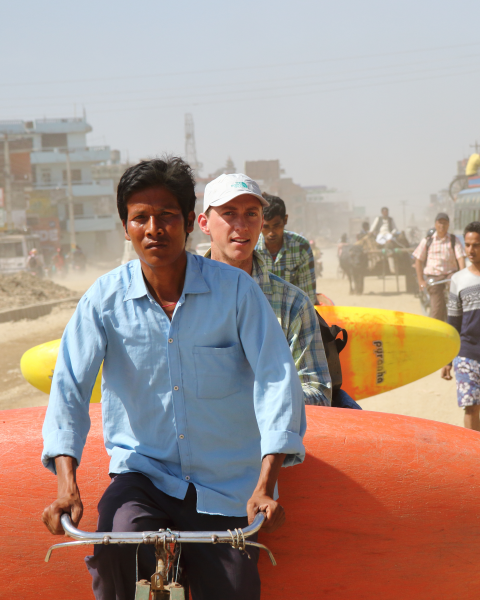
.
I’m still not sure what I feel about hiring people to carry my gear for me. On one hand, human powered transport is part of normal life in rural Nepal and it’s an entirely valid way of putting money into the local economy in return for a really helpful service. On the other, it’s often taking people away from their normal work, potentially distorting the local economy, and doesn’t feel very independent or self sufficient. This time, expedience trumped any qualms I might have had; the porters took the boats, we took the gear, and we headed on down to the river.
.
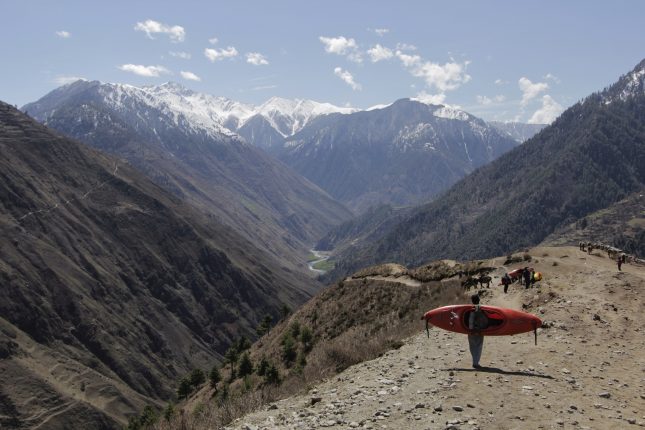
.
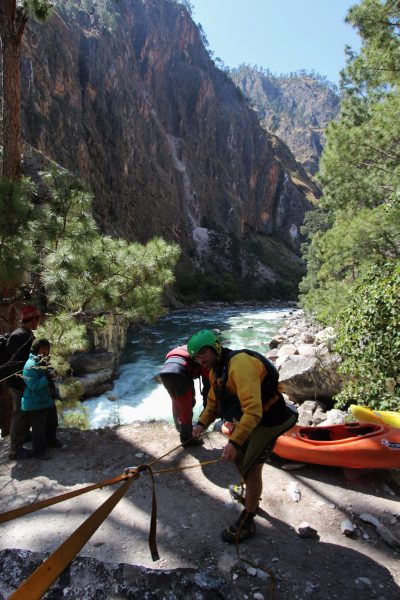
.
Before heading out to Nepal we tried to discover more about the river from those who’d already been there. A group of Scottish paddlers including Chris Dickinson and Richard Joy had put up one of the early descents at epic levels. So we knew we’d find a gnarly gorge on the first day, which we’d probably want to walk around. Everyone we talked to told us to get out early, as soon as the rapids start to liven up a bit, to avoid a truly epic portage. We didn’t do this (mostly my fault!), and the ensuing hours of suffering as we hauled the boats up a steep, slippy tree-lined slope were precisely as described.
.
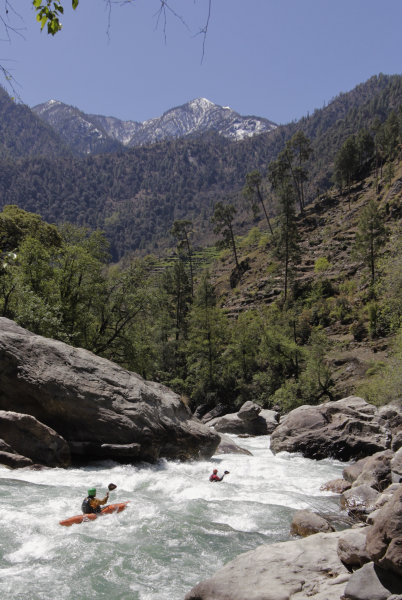
.
The river has plenty of long rapids; some eminently runnable, others less so. One rapid increased in difficulty very gently, suckering us into a more fluid “read and run” style of paddling, before dropping between and underneath a nasty pile of boulders. At one point early on, there’s a weird swirly eddy in the centre of the flow, which most of the river siphons out the bottom of; not a great place to be. There’s some utter mank to portage, but also some really classy white water. The trick, as ever, is working out which is which before you’re committed to it!
.
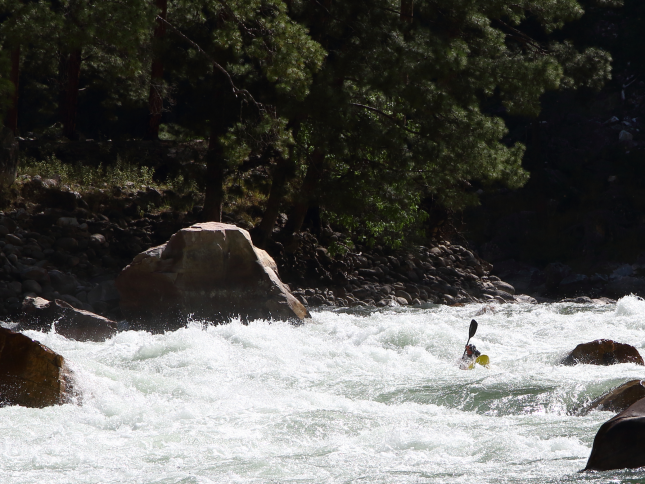
.
Squeezing ten days of food and camping gear into a kayak makes quite a big difference to both the paddling and the portaging. It’s a pretty minimalist way of life, but even so the boats are seriously heavy for the first few days. Most Nepali rivers get steeper further upstream, so the hardest rapids are often found towards the start of the trip, just as the boats are at their heaviest and least manoeuvrable, and whilst you’re still getting your head around the power and size of the white water. Casually changing direction and driving over to the other side of the river, becomes as much about grunt as technique. On the plus side, when you do drop into the hole that you were trying to avoid, all that extra weight does sometimes carry you through.
.
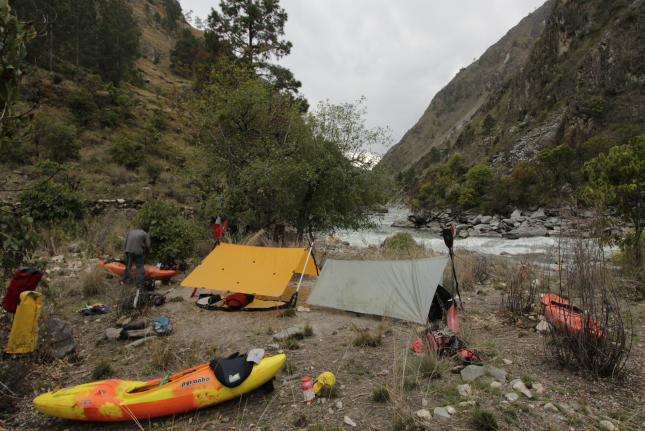
.
At the end of each day it’s a simple routine; change into dry gear, put some river water into the Millbank filter, add iodine as it dribbles through, assemble the spare paddles, get the tarps up, inflate the Thermarest and get some food on. Usually by this point, even in the remotest of spots, an audience of children have appeared. The change over the last decade is that nowadays you’ll most likely have a phone signal at your camp spot. That must have brought a load of advantages to the local villages, but it has also changed people’s behaviour and their expectations of the strange Europeans who’ve just appeared out of the river and are now camping on their patch.
.
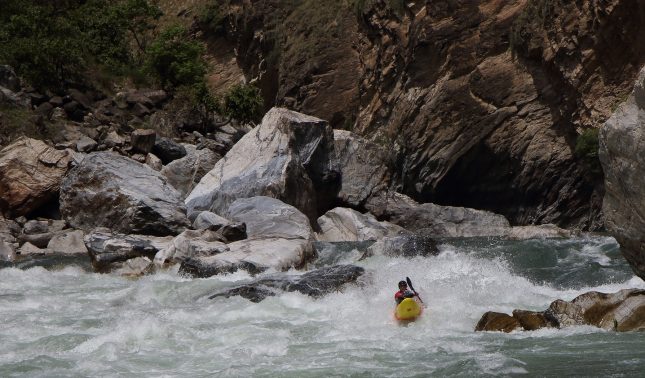
.
The rapids keep on coming. For a whole week, each day brings a mixture of top quality white water, not-so quality white water and portages. My waking hours are a mixture of fear, elation, some serious physical effort and the joyful feeling of absolute interdependence and interconnectedness that comes from being part of a small group that’s fully committed to the river.
.
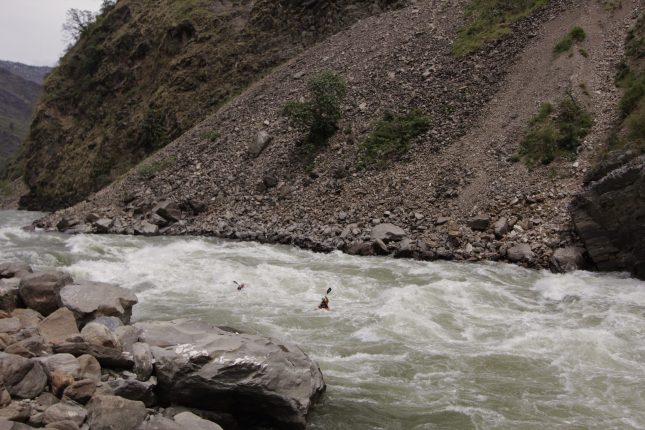
.
On day eight we finally reach the lower Karnali and the stress evaporates! It’s a lovely section of river that I’ve paddled before; 180km, with some classy big volume grade 4 rapids. We notice numbers spray painted onto some prominent rocks, and wonder if they’re markers for the hydroelectric scheme which now threatens this lower stretch. A raft trip might spend a week or more on this section, but we’re hungry, and food supplies are dwindling (Chinese boiled sweets and peanut butter are most of what remains), so we keep on cranking out the miles.
.
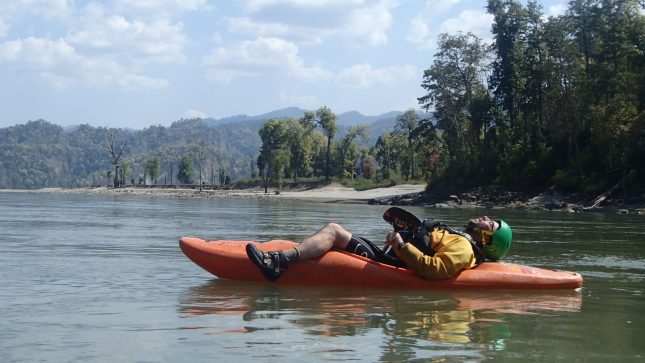
.
Day ten begins with an early start. The Thuli Bheri (which is another absolute gem of a trip) joins us to our left, adding to the flow as the mature river meanders between shingle banks. We round a corner between the last of the Mahabharat hills and float lazily out onto the plains. The horizon opens up and there’s already a hot dusty headwind. By 9am we’ve bought and consumed a few celebratory drinks, and loaded our now much lighter kayaks onto the roof of a bus to take us back to Pokhara.
In 10 days, we’d travelled from Simikot in the wild west of Nepal back down to the dust and noise of Chisapani. We’d paddled almost 250 miles of river and lost 2 miles of height. The landscape changed from the snowy Himalayas, through deep gorges, into the foothills and eventually onwards to the savannah of Bardiya national park.
Thanks to Jonny and Stu for a truly excellent adventure, for looking after me and for the use of your photos.
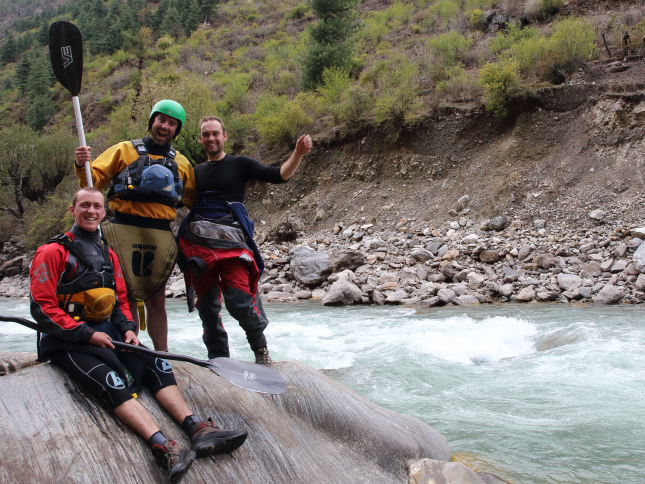
About George Fell
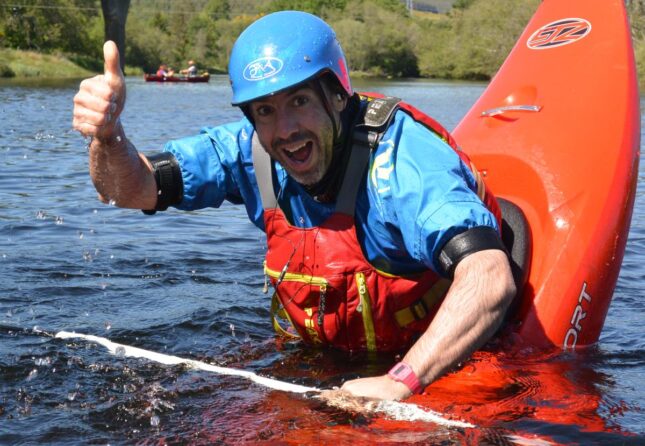
After a flirtation with meteorology, working for British Antarctic Survey and the Met Office, George now devotes all his time to paddlesport. Like the water rat, he believes that “there is nothing—absolutely nothing—half so much worth doing as simply messing about in boats”.
George joined the Glenmore Lodge Paddlesports team in 2018 and delivers both British Canoeing Performance, Leadership and Qualification courses, but also the range of skills training course, from Discover level to Advanced.